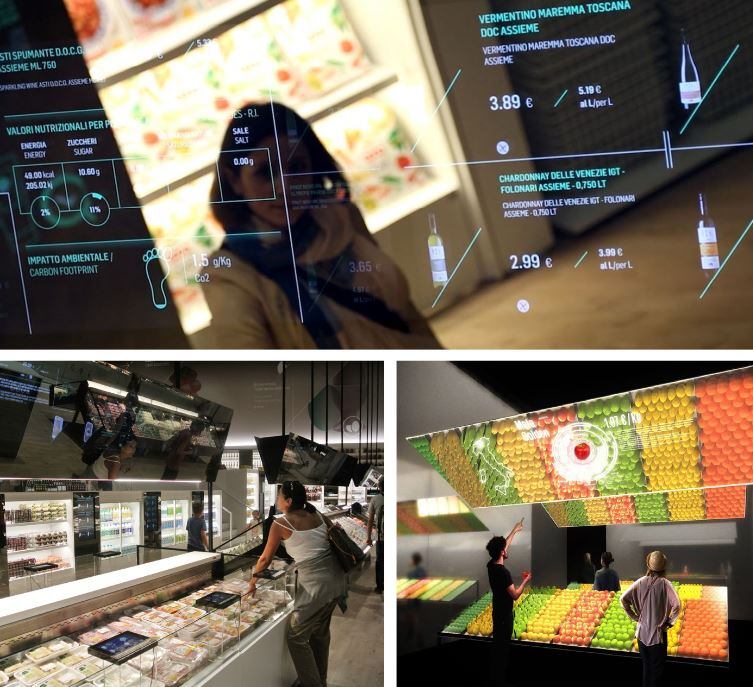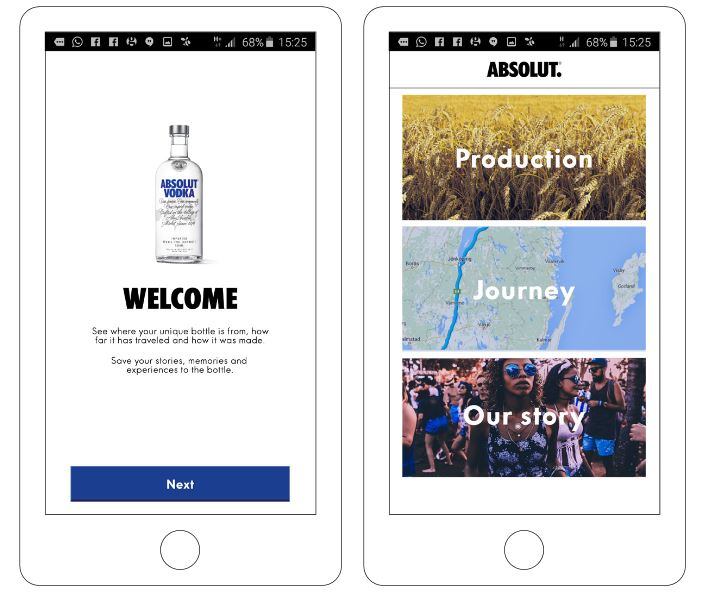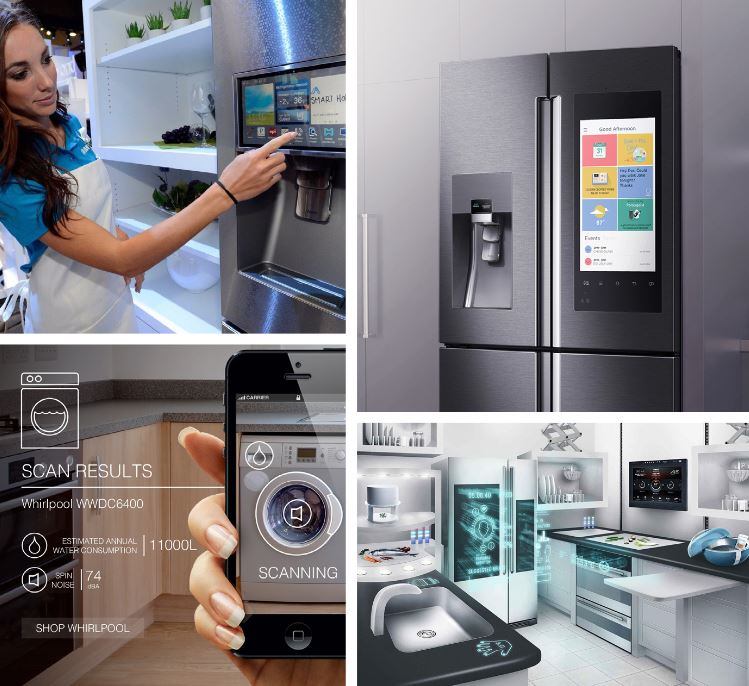However, it says there is little available research on how the IoT might affect supply chain management, OEMs and retailers and what effect it will have on FMCG (Fast Moving Consumer Goods) brands and its impact on consumers’ experience of brands.
10 connected product & packaging prototypes
As a result, Mindshare partnered with SharpEnd, the UK’s first Internet of Things agency, on a research project called ‘Everyday Connects’, to trial 10 connected product and packaging prototypes in five households over two weeks, codenamed Huddle R&D.

Jeremy Pounder, futures director, Mindshare, said for the first time, product packaging has the potential to become an adaptable digital touchpoint, allowing brands to tailor interactions to different audience segments while collecting real usage data from within the home.
As part of the trial, Mindshare and SharpEnd combined existing household products with communication technology such as near field communication (NFC), and wireless smart buttons.
The concepts were designed to span a range of communication types, covering the four ways in which household product brands could make use of the functionality of the IoT to deliver information, experiences and services to consumers in the home via Product Recommendations; Use Guidance; Reordering and Brand Story.
For example, using NFC tags, the team added functionality to packs of Old El Paso flour tortillas and Stock Pots which, when scanned with a smartphone, allowed participants to access a range of recipes that could be created using them.
Once a recipe was chosen, the participants were presented with a shopping list of additional ingredients to create the recipe and given the option to add them to their online shopping account.

During the trial, participants received a notification that their Stock Pots were a few days away from expiry. They were then presented with a number of recipes that they could prepare in the next few days to help make use of the stock pots before they were thrown away.
Amazon Echo is a Bluetooth speaker with an in-built virtual assistant that responds to voice commands audibly when spoken to using the name ‘Alexa’.
The team created a site which the Echo could access which featured a number of recipes that could be created using the Stock Pots that each household had been provided with. By issuing the command “Alexa, open recipes”, The Echo would access the list of recipes. Once a recipe was chosen, the Echo would then read out loud step by step instructions for how to make it.
Toward the end of the trial, participants received a notification on their mobile phones informing them that they were running low on yeast extract spread, and suggesting a nearby retailer that they could visit to buy a new jar. This notification was triggered by the level of yeast extract spread dropping below a predetermined amount, and their proximity to the retailer in question.
Absolut vodka
It also gave participants a bottle of Absolut vodka, which when scanned with a mobile phone, provided them with information on the provenance of the individual bottle, its carbon footprint, and additional multimedia brand content.
Pounder said in a report by The Economist Intelligence Unit last year, of 561 executives interviewed, only 19% were planning radical changes to harness the potential of smart things.
“This is likely to change rapidly over the next few years, which means now is the time to prepare,” he said.
“Think of the role that your brand plays in consumers’ lives. Do you have a compelling brand story? Do you have entertaining content that would benefit from access directly through the product packaging?

“Packaging has always been a key touchpoint but, for the first time it now has the potential to become an adaptable digital touchpoint. Imagine tailoring the interactions offered through your connected packaging to different audience segments, or providing rewards and offers on an individual basis.
“The advent of IoT within everyday household products will allow for an unprecedented wealth of granular usage data to be collected. Brands and marketers will be able to collect real information about how their consumers are using their products, and enable them to provide services beyond the simple function of the product, tailored to their consumers and informed by their behavior.
“By adding real use data, advertisers will be able to tighten their parameters within programmatic buying, making more educated decisions about budget prioritization.
“Now is the time for brands to begin to experiment with connected packaging in a structured way.”
However, he added for the concepts it devised in the trial to become a reality, there needs to be an initial investment in infrastructure.
NFC, or similar communication technology will need to be incorporated cost-effectively into the packaging of household products, while a simple method of scanning them will need to be introduced to the home.

“We believe the active scanning of each product that is put into the refrigerator or cupboard would prove to be too great a barrier for adoption. Instead, for mass adoption of connected packaging, there will need to be a passive solution, either built into the kitchen units and appliances, or introduced as an add-on,” he said.
Following the trial, it found there is a very real opportunity to use the opportunities offered by the IOT to move beyond a simple, functional relationship with consumers, and to become providers of services within the home.
Connectivity would allow brands to communicate advice on how to use a product, notifications on when a product will expire and alerts when a product is running low, among many other types of communication.
“This represents a move towards a service driven relationship with the consumer, where the brand value of household products is judged not only by the efficacy of the product and its marketing, but also on the level of service it delivers,” he added.
“This provision of services such as expiry notifications will have a real impact on the everyday lives of consumers, helping to forge stronger brand loyalty for those that provide the most useful services.
“Connected packaging would also provide brands with the opportunity to deliver a wealth of multimedia content to consumers in a quick and easy way. By scanning packaging with their phones, consumers could access additional information about the brand, or the individual product’s provenance, carbon footprint and expiry date.
“Alternatively, the consumer could access entertainment content, games, or competitions by interacting with the packaging. This would provide the opportunity for consumers to engage more deeply with a brand’s story should they wish to, or to check that a product meets the ethical standards they demand.”
Unsolicited push notifications will not be tolerated
On the negative side, feedback from participants in the trial said unsolicited push notifications will not be tolerated, and may have a negative impact on brand perception.
Consumers want to choose which product they interact with, and how much data they allow companies to access.
“This is not to say that push notifications from household products are not desirable, rather, consumers will expect to be able to opt-in to notifications from individually selected products that are of particular relevance to them. For example, in some households there may not be any need to prompt that the milk is running low as it is a regular purchase item, however, a notification that the eggs are nearing their expiry date, and should be used up may be of more value,” added Pounder.
FACTBOX
Huddle R&D findings;
- There is a strong appetite for household brands to provide ‘services’ in the home – 64% of UK consumers are interested in the idea of everyday objects being connected to the internet.
- Connected packaging that delivers extra consumer value is most appealing.
- 62% find the idea of a product which alerts you or reorders itself when about to run out appealing.
- 58% find the idea of a product reminding you when it is about to reach its expiry date appealing.
- Product packaging has the potential to become an adaptable digital touchpoint - over 50% of those surveyed are interested in scanning packaging to learn more about the provenance of fresh produce.
- Consumers are willing to passively share purchase and usage data on everyday items - 62% agree that connected products can collect data if they get something of value in return.
- Household products companies could move towards subscription relationships with consumers.
- 39% agree that ‘I would consider a service contract with a brand where it automatically reorders and delivers products for me’
- But consumers are wary of ceding too much control to products capable of communicating to them directly or acting independently
- 76% agree that ‘If all household products are internet connected, I need to be in control of which can interact with me and in what circumstances’
- There will be a need for a central aggregator to manage all connected products in the home
- 35% agree that ‘I would like a virtual assistant to manage all of the interactions with products for me’
“Interaction must be quick and easy. If the effort of interaction begins to outweigh the perceived benefit, this will serve as a strong barrier to engagement.
“The process must be as frictionless and intuitive as possible. Many participants cited QR codes as delivering similar interactivity as the NFC tags that we employed during the study.
“The key difference, that makes NFC or similar technologies much more compelling, is the frictionless nature of the interaction. The participants needed only to hold their mobile phones near to a product’s packaging, to be presented with all of the information and services available for that product.
“Compared to scanning a QR code, which requires the opening of a code reading app, and then scanning with the inbuilt camera, the NFC experience is a vastly quicker and simpler one.”
A number of tech, finance, and food production companies have already made small inroads into this space recently, says Mindshare, including Bosch, GE, SAP, Texas Instruments and Atmel.
But for mass adoption to become a reality, the cost to the consumer needs to be relatively low, and the number of interactive products will need to be high, for consumers to recognize and engage with them.
If connectivity is limited to a small range of products, this will serve to frustrate and confuse.
“In our opinion, the organizations best placed to drive this evolution are the supermarkets. In their own-brand produce they have a vast array of packaged products that would benefit from the capability to communicate with consumers,” said Pounder.
“A large proportion of these products are perishables, and the integration of expiry notifications would revolutionize the way consumers purchase and use these products.
“The supermarket would be able to suggest companion products and recipes to make use of produce nearing its date of expiry, opening up great potential for cross-selling.
“In addition, they would accumulate a wealth of data regarding when and how often products are bought and used. But perhaps the greatest benefit to the supermarket of introducing this technology would lie in the boost in brand perception that would result from being the supermarket that champions reduction in waste, saving consumers’ money, and being at the forefront of technological innovation.”
Cameron Worth, founder of SharpEnd, added: “This project was exciting to work on as it was gathering real feedback from real people.
“In the IoT space people rarely ever ask the question ‘what’s in it for the consumer?’ and this research project was a testament to how seriously both Mindshare and SharpEnd consider user experience.
“Applying our expertise in developing IoT applications with Mindshare’s credibility in research has delivered what we consider to be a powerful and thought-provoking report for brands as they enter this exciting new space and activate the ‘real world’ as the new creative platform.”
Click here to read the full report.
